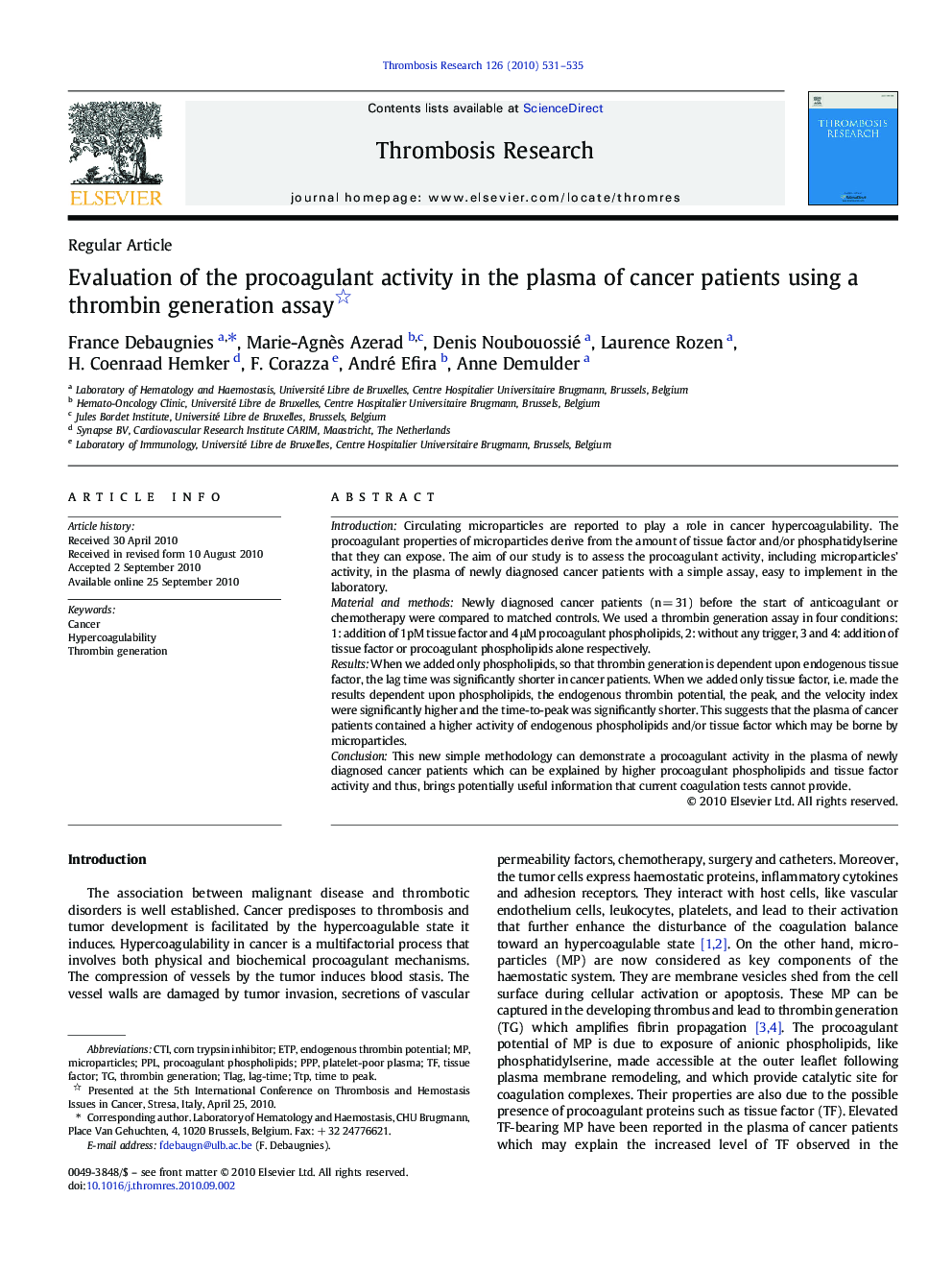| Article ID | Journal | Published Year | Pages | File Type |
|---|---|---|---|---|
| 3029124 | Thrombosis Research | 2010 | 5 Pages |
IntroductionCirculating microparticles are reported to play a role in cancer hypercoagulability. The procoagulant properties of microparticles derive from the amount of tissue factor and/or phosphatidylserine that they can expose. The aim of our study is to assess the procoagulant activity, including microparticles’ activity, in the plasma of newly diagnosed cancer patients with a simple assay, easy to implement in the laboratory.Material and methodsNewly diagnosed cancer patients (n = 31) before the start of anticoagulant or chemotherapy were compared to matched controls. We used a thrombin generation assay in four conditions: 1: addition of 1pM tissue factor and 4 μM procoagulant phospholipids, 2: without any trigger, 3 and 4: addition of tissue factor or procoagulant phospholipids alone respectively.ResultsWhen we added only phospholipids, so that thrombin generation is dependent upon endogenous tissue factor, the lag time was significantly shorter in cancer patients. When we added only tissue factor, i.e. made the results dependent upon phospholipids, the endogenous thrombin potential, the peak, and the velocity index were significantly higher and the time-to-peak was significantly shorter. This suggests that the plasma of cancer patients contained a higher activity of endogenous phospholipids and/or tissue factor which may be borne by microparticles.ConclusionThis new simple methodology can demonstrate a procoagulant activity in the plasma of newly diagnosed cancer patients which can be explained by higher procoagulant phospholipids and tissue factor activity and thus, brings potentially useful information that current coagulation tests cannot provide.
